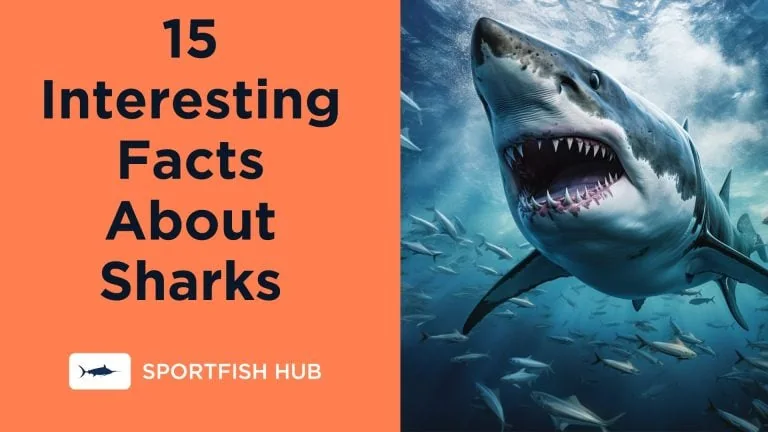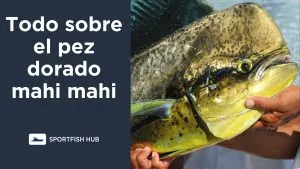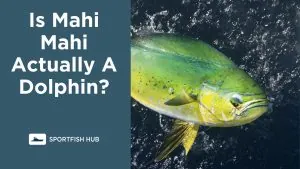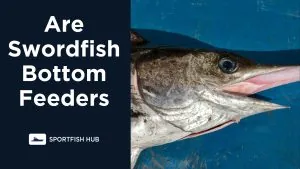Sharks are one of the most fascinating and often misunderstood creatures in our oceans. Here are 15 facts about sharks that you may not know:
- Shark Statistics:
- Shark Attack Stats:
- 1. Sharks have exceptional senses
- 2. Sharks have numerous teeth
- 3. How many bones do sharks have
- 4. Sharks come in many sizes
- 5. Sharks have few natural predators
- 6. They are excellent swimmers
- 7. Why do sharks have rough skin?
- 8. Where Sharks Live
- 9. They have diverse diets
- 10. Sharks utilize stealth and surprise
- 11. They have a sixth sense
- 12. Sharks reproduce in different ways
- 13. They have long lifespans
- 14. Sharks demonstrate social behaviors
- 15. Humans kill millions of sharks annually
- FAQ
- Why do sharks have such a bad reputation?
- Why are sharks important to the ocean ecosystem?
- How many shark species are there?
- How do sharks reproduce and care for their young?
- Conclusion
Shark Statistics:
| Statistic |
|---|
| 1. Shark ecotourism is growing at 10% annually. (Journal of Sustainable Tourism) |
| 2. Post-release mortality rates for caught sharks range from 0-85%. (Reviews in Fish Biology and Fisheries) |
| 3. Sharks account for only around 1% of the 120 million tonnes of fish caught annually. (FAO) |
| 4. Over 40% of pelagic sharks caught as bycatch are threatened species. (Ecological Applications) |
| 5. Sharks only cause around 1% of beach closures compared to other dangers like rip currents. (University of Florida) |
| 6. Circle hooks can reduce shark bycatch by up to 80% compared to J-hooks. (Reviews in Fish Biology and Fisheries) |
| 7. DNA evidence finds 1 in 4 shark products mislabelled, hiding illegal trade. (PLOS ONE) |
| 8. The value of shark ecotourism may be over $314 million annually. (Shark Conservation Strategies) |
| 9. Over 90% of fisheries with adequate data have unsustainable shark catches. (Nature) |
| 10. Around 64% of shark attack victims survive with most injuries being minor. (University of Florida) |
Shark Attack Stats:
- The country with the most reported shark attack fatalities from 1580-2020 was Australia, with 637 deaths. (Taronga Conservation Society Australia)
- In 2020, there were 129 alleged unprovoked shark attacks worldwide. (International Shark Attack File)
- just 17% of global shark bites from 1958–2016 occurred in North America. (PeerJ)
- Surfers and those participating in board sports accounted for 61% of shark attack victims in 2020. (International Shark Attack File)
- Fatal shark attacks at beaches protected by shark nets and drumlines are less common than at unprotected beaches. (Coastal Management)
1. Sharks have exceptional senses
- Sharks have excellent vision and can see colors and even low levels of light. They have a nictitating membrane that protects their eyes when attacking prey.
- Their sense of smell is so acute they can detect one drop of blood in an Olympic size swimming pool. This allows them to detect injured or immobile prey.
- They have specialized electroreceptive organs called the ampullae of Lorenzini that allow them to detect the electromagnetic fields produced by living things. This helps them find prey buried in the sand.
See also: What Eats Sharks
2. Sharks have numerous teeth
- Sharks continuously shed their teeth; some species shed approximately 35,000 teeth in a lifetime. New teeth rotate into place, ensuring they always have a razor-sharp bite.
- Their teeth are aligned in rows: when one is damaged or lost, another moves forward to take its place.
- Shark teeth are covered in fluoride, making them cavitation-resistant. This protects them against mechanical damage when biting hard objects like bone.
You might also be interested in reading: How Many Bones Do Sharks Have?
3. How many bones do sharks have
- Sharks have no bones. Their skeleton is made up entirely of cartilage. Here is a list explaining this:
- Sharks have a cartilaginous skeleton rather than a bony skeleton.
- Cartilage is a flexible, strong connective tissue that provides support for sharks.
- Unlike bony fish, sharks do not have ribs or jaws made of bone.
4. Sharks come in many sizes
| Shark Species | Average Size |
|---|---|
| Whale shark | 18-32 feet |
| Great white shark | 15-20 feet |
| Basking shark | 16-32 feet |
| Tiger shark | 10-14 feet |
| Blue shark | 5-10 feet |
| Spiny dogfish | 3-5 feet |
The world’s biggest and smallest sharks
- The largest shark is the whale shark, which can reach around 50 feet long.
- The smallest shark is the dwarf lantern shark, which is only about 6 inches fully grown.
5. Sharks have few natural predators
- Sharks have few natural ocean predators once they are fully grown. Only killer whales and larger sharks pose much threat.
- Shark pups and juveniles are more vulnerable to attack from other shark species. Their smaller size also makes them prey for some large bony fishes, seals, crocodiles, and seabirds.
- Humans are by far the biggest threat to sharks through fishing, culling, habitat loss, and pollution. Overfishing is putting many shark species at risk of extinction.
6. They are excellent swimmers
- Sharks use their crescent-shaped tails to propel themselves through the water with powerful side-to-side movements.
- Their streamlined bodies and smooth, toothlike scales (called dermal denticles) reduce drag and allow them to swim efficiently.
- Great white sharks can hit speeds over 35 miles per hour in short bursts. The mako shark is the fastest shark species and can reach speeds up to 46 miles per hour.
7. Why do sharks have rough skin?
- Sharks have rough skin for the following reasons:
- Their skin is covered in tooth-like scales called dermal denticles.
- These denticles give sharks their rough, sandpaper-like texture.
- The denticles help sharks move smoothly through the water by reducing drag.
- They also provide protection against parasites, abrasions, and injuries.
8. Where Sharks Live
- Sharks live in tropical, temperate, and arctic waters throughout the world’s major oceans.
- Some species thrive near the shore, while others inhabit the open ocean down to depths of around 9,000 feet.
- Bull sharks are able to tolerate fresh water, and certain populations travel hundreds of miles up rivers.
9. They have diverse diets
- Most sharks are carnivorous predators but don’t all eat the same things. Diets can vary by species and age.
- Many sharks feed on fish, squid, seals, sea lions, turtles, and seabirds. Larger sharks may even eat smaller shark species.
- Some sharks, like whale sharks and basking sharks, filter tiny plankton and krill from the water. Others, like wobbegong sharks, ambush their prey from camouflaged positions on the sea floor.
10. Sharks utilize stealth and surprise
- Sharks rely on stealth and surprise to capture unaware prey. Their dark-colored backs allow them to blend in when viewed from above, while the lighter underside makes them hard to see from below.
- Some sharks hide in caves or under ledges to ambush prey. Others camouflage themselves on the seafloor or approach slowly from behind.
- Sharks have successfully hunted using these techniques for millions of years, a true testament to their skill as predators.
11. They have a sixth sense
- Sharks and several other fish have a sixth sense – the ability to detect electromagnetic fields through special organs called the ampullae of Lorenzini.
- These jelly-filled pores on a shark’s nose and head allow it to sense the natural electrical signals given off by potential prey. This helps sharks hunt even when visibility is poor.
- Ocean currents and salinity changes also create electric fields that sharks may use for navigation and migration.
12. Sharks reproduce in different ways
- Sharks utilize various types of reproduction. Many species are ovoviviparous – the young develop inside eggs that remain within the mother’s body until they are ready to hatch.
- Some sharks are viviparous – the young develop within the mother’s body with no egg casing, and she gives birth to live pups.
- A few species, like the bull shark, are oviparous – females lay eggs that develop and hatch outside of the body.
13. They have long lifespans
- If not caught by fishermen, most shark species have long lifespans comparable to many mammals and birds.
- The Greenland shark has the longest known lifespan at around 400 years. Whale sharks, spiny dogfish, and blacktip reef sharks can live 70-80 years or longer.
- Slow growth, late sexual maturity, and having relatively few offspring provide a biological advantage resulting in long lifespans.
14. Sharks demonstrate social behaviors
- Rather than being solitary hunters, some sharks demonstrate social and cooperative behaviors.
- Great whites, sand tiger sharks, and scalloped hammerheads gather seasonally in significant numbers at specific mating grounds.
- Groups of lemon, blacktip, and spinner sharks cooperate together to herd and corral schools of fish or swarm around bait balls.
15. Humans kill millions of sharks annually
- Humans kill around 100 million sharks per year, according to scientific estimates.
- Commercial fishing accounts for the vast majority of shark deaths. Shark fins are highly valued for use in shark fin soup.
- Bycatch, sport fishing, culling, and the curio trade also contribute to massive shark mortality rates.
FAQ
-
Why do sharks have such a bad reputation?
Large shark species that do occasionally attack humans get the most media attention, creating exaggerated fears. In reality, sharks rarely target people and aren’t bloodthirsty man-eaters.
-
Why are sharks important to the ocean ecosystem?
Sharks play a vital role as apex predators, maintaining balance by preying on weak and diseased animals. They also scavenge on dead creatures which helps keep the ocean clean.
-
How many shark species are there?
There are over 500 known species of sharks living in oceans around the world today. New species continue to be discovered by scientists as well.
-
How do sharks reproduce and care for their young?
This depends on the species, but most sharks fertilize internally and give live birth to pups. Some lay egg cases that hatch later. Mother sharks protect and nourish pups after birth in some species.
Conclusion
Sharks come in a thrilling variety of shapes, sizes, and abilities, making them perfectly adapted aquatic predators. Hopefully, these interesting facts shed light on the complex nature of sharks beyond the stereotypes. The future of many vulnerable shark species now depends on our willingness to conserve these captivating creatures.













